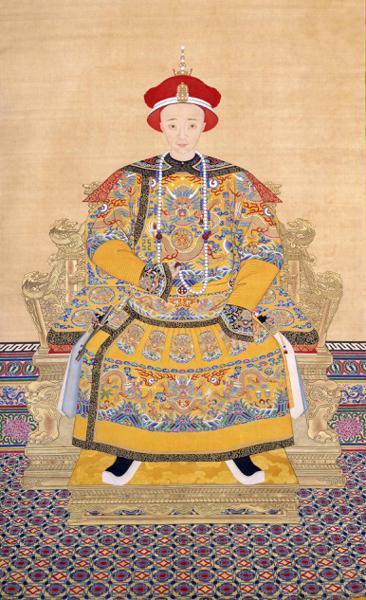陈昊-陈昊 | Nonhuman Animals in a Human Pandemic: Past and Present
-
陈昊,animals,human

- 中国历史故事-小虎历史故事网
- 2023-07-28 06:12
- 小虎历史故事网
陈昊-陈昊 | Nonhuman Animals in a Human Pandemic: Past and Present ,对于想了解历史故事的朋友们来说,陈昊-陈昊 | Nonhuman Animals in a Human Pandemic: Past and Present是一个非常想了解的问题,下面小编就带领大家看看这个问题。
原文标题:陈昊 | Nonhuman Animals in a Human Pandemic: Past and Present
作者简介:
陈昊,中国人民大学医学史方向副教授。最新著作有《身份叙事与知识表述之间的医者之意:6-8世纪中国的书籍秩序、为医之体与医学身份的浮现》和《疾之成殇,秦宋之间的疾病名义与历史叙事中的存在》。
内容提要
《人类流行病中的非人类动物:过去和现在》一文,从历史和现实角度分析了人类流行病中非人类动物扮演的角色和被污名化的困境。
陈昊指出,无论在历史还是现实中,对于病毒起源的探索很快就演变为一场针对病毒的物种源头和谁该为病毒的跨物种传播负责的猎巫行动,进而在一场广泛的野生动物恐慌中,引发残忍而灾难性的动物管理方法。在灭杀
中国历史故事拼音版音频
“恶棍”动物,拯救“无辜”人类的同时,也引发进一步的生态灾难。对于防止流行病引发的生态破坏行为,陈昊认为科学家与历史学家等应当合作。新冠肺炎揭示了缠绕于人类与非人类、身体和景观、地方和全球生态之间流动的、非线性的相互作用关系,能够让我们以一种不同的方式度过这场大流行,在这种方式中,非人类动物和生态系统可以与我们一起恢复。
During this devastating period of COVID-19, the media worldwide has celebrated optimistic, even utopian, stories about domestic or wild animals reclaiming the streets, parks, and even canals while humans stayed home in lockdown mode. The good feelings prompted by these uplifting stories have occasionally been shattered, however
中国历史故事集人物故事
, by disturbing news. In March, for instance, local veterinary officers from India began to report abnormal behavior and deaths among monkeys. On April 8, 2020, several media reported the deaths of at least fifteen simians in Pawansa village. Believed to have died from pneumonia, a common complication of COVID-19, the simians’ deaths contributed to rising concern about cases of infected animals, from companion dogs in Hong Kong and stray cats in Wuhan to three lions and four tigers at New York’s Bronx Zoo (including Nadia, a Malayan tiger that serves as one of the zoo’s main attractions). The list did not stop there. On April 26, the Agriculture Ministry of Holland confirmed that animals from two mink farms were infected with the novel coronavirus.How had those animals become infected? What are their fatality rates? And do the rates pose a threat to the species? Will infected animals transmit the disease to other animals or species nearby? We have limited scientific knowledge with which to answer these questions. One of the few research articles on animals with COVID-19 appeared in Science in early April and claimed that ferrets and cats are more susceptible to infection than are dogs, pigs, chickens, and ducks and that cats are at risk of airborne infection.However, this does not mean that dogs could not get infected and die from COVID-19. In an article that appeared in Nature, the Agriculture, Fisheries, and Conservation Department of Hong Kong acknowledged that pe
中国历史上打破规则的故事
t owners could inadvertently infect their companion dogs with the virus. Unfortunately, one such dog, a Pomeranian, the first known human-to-animal case, died on March 16 without any related symptoms. Like the simians in Pawansa village, we do not know for sure whether the virus caused its death.Neither article sought to resolve the mystery of the death of the animals but, rather, to suggest advisable strategies for “animal management” during the pandemic. The case in Hong Kong, for instance, highlights the necessity of quarantining companion mammals when the owner tests positive. The foundation of the management strategies rests on an anthropocentric concern for how the virus might “jump” from animals to humans. This worry became a reality on May 20 when the Dutch minister of agriculture, Carola Schouten, confirmed that a mink farm worker might have gotten infected from the sick minks. Two similar cases were reported shortly thereafter, marking what may be the first reports of animal-to-human transmission with solid scientific evidence.
Investigation into this zoonotic disease had begun earlier, when the genetic code of the RNA virus was sequenced at the onset of the COVID-19 outbreak. The search for the origins of the novel coronavirus quickly turned into a witch hunt, however, with two related questions: from which species did the virus “originate” and who should be held responsible for the species barrier jump? Epidemiologists and virologists suggested possible nonhuman animal hosts prior to human infection: bats, pangolins, and ferrets were among the more prominently mentioned possibilities. When these discussions entered the horizon of mass media and the public, unfortunately, much fear and panic toward wild animals also appeared. This kind of anxiety was not without precedent, stretching back at least to the 1990s with the greater awareness of “emerging infectious diseases” originating in wild animals and constituting a serious threat to public health. The danger lies in how a fear-driven overreaction can lead to a brutal and disastrous method of “animal management” during pandemics. In the past, our attempts to use chemicals to kill insects as disease vectors led to specie
中国历史上有名的党史故事
s extinction and ecological catastrophe. Poultry species have been euthanized and rendered innocuous all over the world to prevent potential flu viruses from jumping the species barrier. Sadly, death will become the inevitable fate of too many infected nonhuman animals in the pandemic, killed either by the virus or by humans seeking their own protection. Moreover, their deaths may precipitate further ecological disasters.How can we act differently to prevent this pandemic from triggering actions that create ecological damage? To do so, we will need to rely on scientific research. Importantly, scientists and the policy-makers who sponsor the research can gain a critical and reflective perspective from the study of past epidemics and pandemics. To provide that, historians will need to carefully explore the long history of past pandemics. Recently, historians and anthropologists have sought to dig up the historical and epistemological roots of our ways of understanding and treating nonhuman animals in past epidemics. It seems that we have followed a script composed by the microbiological revolution: pathoge
中国历史故事集讲书评
ns as villains, nonhuman animals as evil sidekicks who carry the pathogens, and humans as innocent victims forced to fight back.Contemporary research into “emerging infectious diseases” has enhanced our understanding of the connection between pathogens and nonhuman animals, however. According to medical anthropologist Christos Lynteris, “the resurgence of zoonotic and vector-borne diseases in the course of the twenty-first century (SARS, Bird Flu, MERS, Ebola, Zika and Nipah) has fostered and complicated scientific framings of nonhuman animal and insect hosts and vectors of infectious diseases as ‘epidemic villains.’”It has switched the character of pathogens and their animal hosts: now, nonhuman animals appear as the cunning villains who use pathogens as a weapon. But efforts to find alternative ways to understand the connections among pathogens, nonhuman animals, and humans in epidemics need not attempt to pin blame on any particular species. With various conceptual tools to erase the illusion of a divide between humans and nonhumans, the infected nonhuman animals should be a significant part of the histories that we will write about the COVID-19 pandemic. Indeed, COVID-19 can be used to demonstrate the fluid, non-linear, and interactive associations intertwining human and nonhuman animals, body and landscape, local and global ecology in the process of the pandemic. Hopefully, recognizing the associations will enable us to go through this pandemic in a different way, wherein nonhuman animals and the ecological system can recover along with us.
文章来源:Environmental History,Volume25, Issue 4, October 2020, Pages 604-606. 本文注释从简,详情参见笔谈系列链接:https://academic.oup.com/envhis/article/25/4/595/5922265
【注:为便于编辑,略去配图,原文见“历史的生态学畅想”微信公众号2020年11月21日推送。】
(责任编辑:admin)
原文出处:http://his.newdu.com/a/202103/20/1887421.html
以上是关于陈昊-陈昊 | Nonhuman Animals in a Human Pandemic: Past and Present的介绍,希望对想了解历史故事的朋友们有所帮助。
本文标题:陈昊-陈昊 | Nonhuman Animals in a Human Pandemic: Past and Present;本文链接:http://gazx.sd.cn/zggs/11492.html。
猜你喜欢
- 世界历史-荣新江 陈昊:疾病史与世界历史的书写——《剑桥世界人类疾病史》中译本评介 2023-08-24
- human-侯深|In the Name of Health 2023-07-28
- 陈昊-陈昊《疾之成殇:秦宋之间的疾病名义与历史叙事中的存在》出版 2023-07-04


















